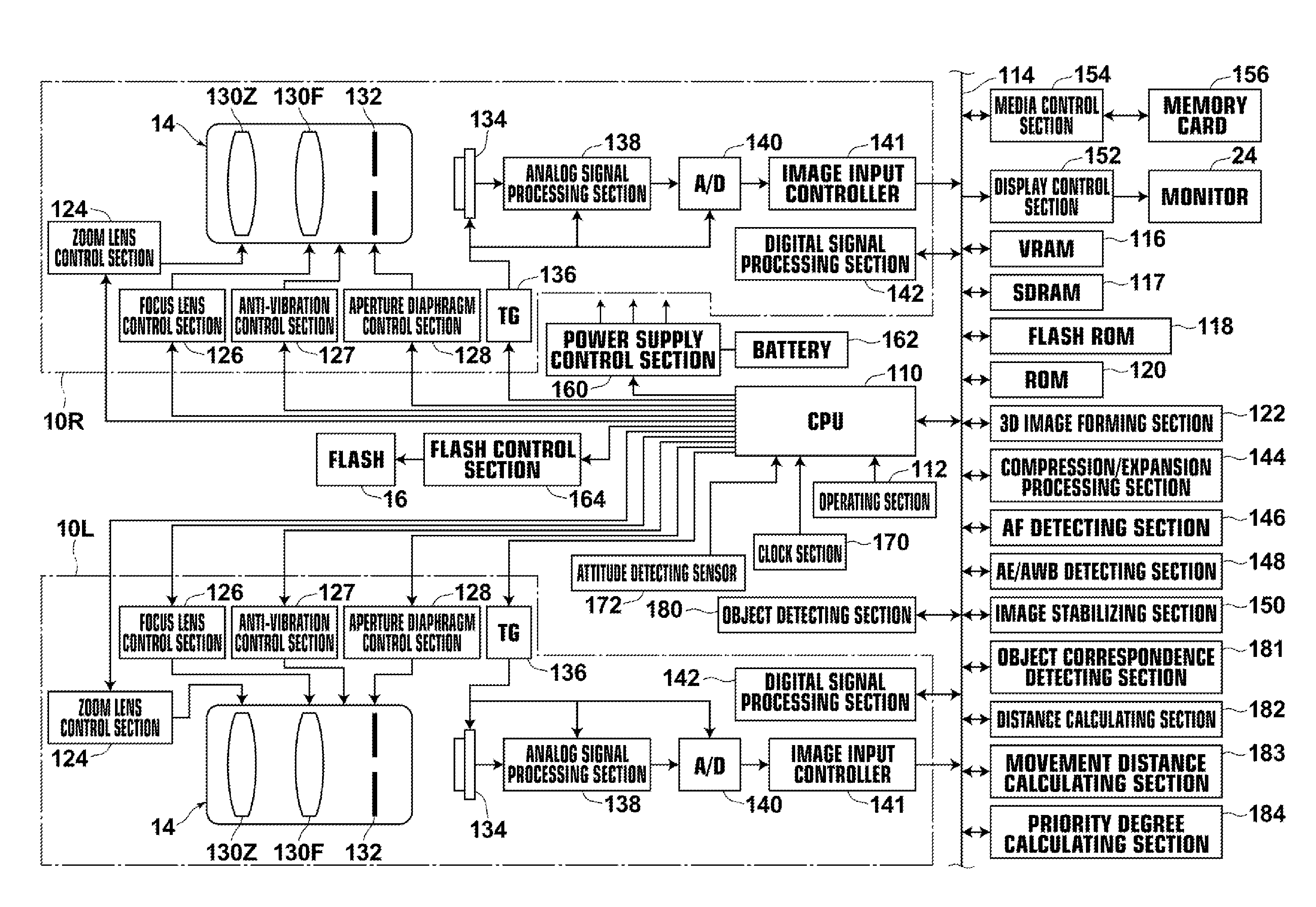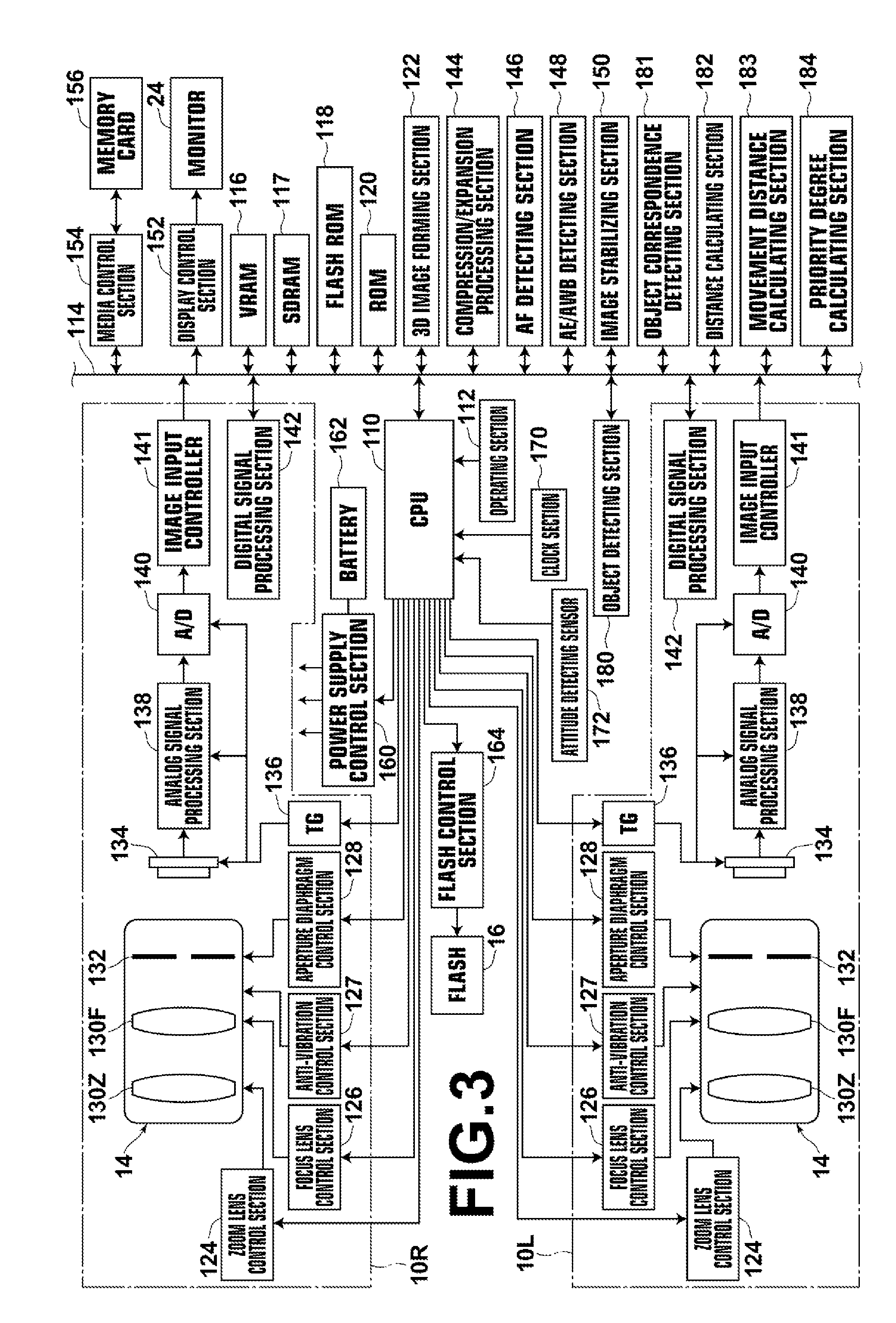Compound eye photographing method and apparatus
a compound eye and photographing technology, applied in the field of photographing methods with cameras, can solve the problems of not being able to perform photographing in the field of photographs, and achieve the effect of reducing processing volume and quick focusing processing
- Summary
- Abstract
- Description
- Claims
- Application Information
AI Technical Summary
Benefits of technology
Problems solved by technology
Method used
Image
Examples
first embodiment
[0116]FIGS. 4A and 4B are flow charts showing a flow of photographing processing in the compound eye photographing method carried out in the digital camera 1. The flow of the processing with respect to the compound eye photographing operation, which is performed with the digital camera 1 by automatically focusing on each of two objects, will be described hereinbelow with reference to FIGS. 4A and 4B. In the explanation made hereinbelow, unless otherwise specified, the processing performed automatically is performed basically in accordance with the control of the CPU 110.
[0117]In this case, the aforesaid mode dial 22 is set at the “2 objects tracking” position, the shutter button 18 is pressed halfway, and the photographing operation is begun. In a step S1, the CPU 110 performs the processing for fetching the live view images, i.e. the processing for fetching the images signals, which are successively outputted in units of a frame from the right imaging system 10R and the left imagin...
second embodiment
[0129]A flow of processing in the compound eye photographing method in accordance with the present invention will be described hereinbelow with reference to FIGS. 7A and 7B. In FIGS. 7A and 7B, similar steps are numbered with the same reference numerals with respect to FIGS. 4A and 4B. As for FIGS. 7A and 7B (and those that follow), if it is not necessary particularly, the explanation of the similar steps will be omitted.
[0130]The method illustrated in FIGS. 7A and 7B is basically identical with the method illustrated in FIGS. 4A and 4B, except that a step S30 and a step S31 are performed between the step S15 and the step S16, and except that a step S32 and a step S33 are performed between the step S16 and the step S17. Specifically, in this embodiment, in the step S32, a priority degree update operation is performed, for example, by specifying the image of the specific object Oi on the monitor 24 constituted of a touch panel with finger touching. In cases where the priority degree ...
third embodiment
[0134]A flow of processing in the compound eye photographing method in accordance with the present invention will be described hereinbelow with reference to FIGS. 8A and 8B. The method illustrated in FIGS. 8A and 8B is basically identical with the method illustrated in FIGS. 4A and 4B, except that a step S40 is performed between the step S15 and the step S16. Specifically, in this embodiment, in lieu of the priority degree being updated by the operation performed by the user as in the method illustrated in FIGS. 7A and 7B, in the step 40, the priority degrees with respect to a plurality of the objects Oi are updated automatically at the time of every variation of the frame of the live view images.
[0135]In cases where the same objects are imaged successively in the live view images, if the same objects are moving, the composition in each frame will vary, and therefore there will be the possibility that the priority degrees having already been adjusted will not be adapted to the compo...
PUM
 Login to View More
Login to View More Abstract
Description
Claims
Application Information
 Login to View More
Login to View More - R&D
- Intellectual Property
- Life Sciences
- Materials
- Tech Scout
- Unparalleled Data Quality
- Higher Quality Content
- 60% Fewer Hallucinations
Browse by: Latest US Patents, China's latest patents, Technical Efficacy Thesaurus, Application Domain, Technology Topic, Popular Technical Reports.
© 2025 PatSnap. All rights reserved.Legal|Privacy policy|Modern Slavery Act Transparency Statement|Sitemap|About US| Contact US: help@patsnap.com



